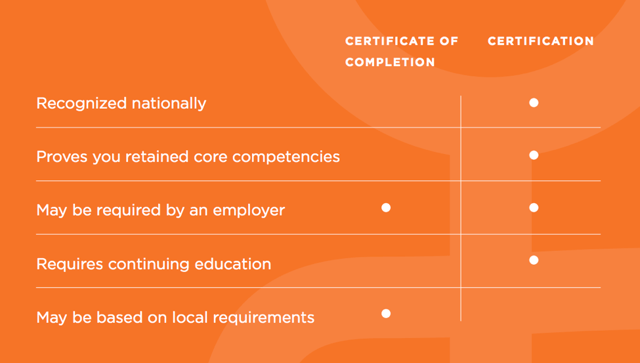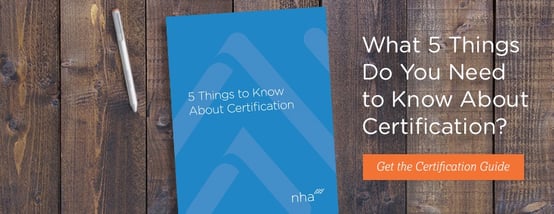You’re thinking about making a career change. Or you’re already in allied health and you want to further your career. You consider getting certified as a CCMA, CET, CBCS, CPT, CEHRS, CPCT/A, CMAA, CPhT …
Confused yet?
All those acronyms can start to blur together. Sure, they look impressive on your resume, but what exactly does “getting certified” mean?
What certification is
Certification is essentially a hard-earned piece of paper. But this piece of paper is much more powerful than most. It serves as an official confirmation that you have certain qualifications and expertise in core areas of the allied health field.
The difference between “certificate of completion” and “certification credential”
They may sound the same, and it’s easy to get them confused, but don’t be fooled — there’s a difference between a “certificate of completion” and a “certification credential.”
- A certificate of completion proves that you completed your training.
- A certified credential proves that you retained the most important knowledge from that training.
There are some other key differences in the two, as outlined in the chart below.

When you earn an NHA certification, you take the same test as everyone else with those credentials (CCMA, CPT, CET, etc.) by their signature. Not all training programs are the same. Having a certification credential that’s nationally recognized shows that no matter what path of training you took, you obtained the core knowledge expected by your potential employers.
Discover why you need — or don’t need — a certification.
Do you need both a certificate of completion and a certification credential? How important is it? Why does it matter? How do you get started?
To learn the answer to these questions and more, download our free guide: “5 Things to Know About Certification.” This guide is specifically designed to provide you with clear direction and actionable information that can help you move forward with confidence.


